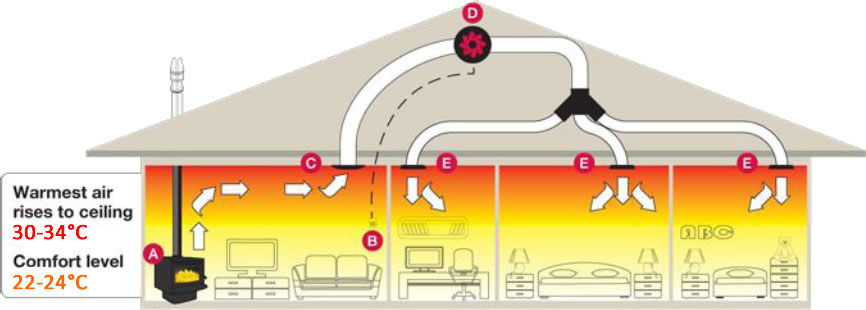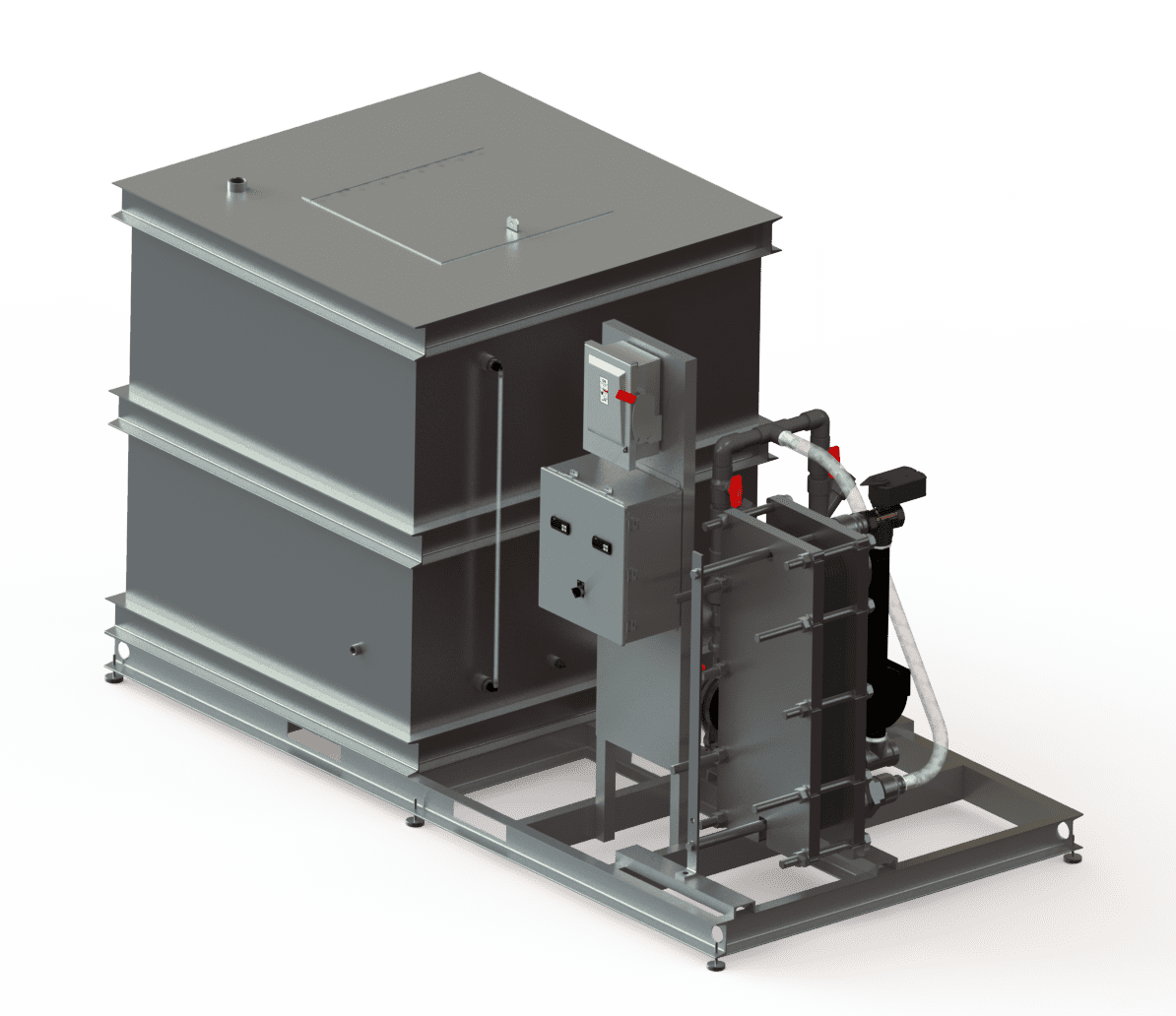What’s Next for DVS Heat Transfer Systems in the Era of Smart Thermal Infrastructure
A Comprehensive Overview to Selecting the Right Heat Transfer Systems for Your Demands
Choosing the appropriate Heat transfer system is essential for functional effectiveness. Different systems satisfy various requirements, affected by elements such as temperature array and fluid type. Comprehending the concepts behind Heat transfer, such as convection, conduction, and radiation, is crucial. Furthermore, reviewing power resources and maintenance practices can impact long-term efficiency. A closer exam of these factors to consider exposes just how to customize a system to particular demands. What should one prioritize in this complex decision-making process?
Comprehending Heat Transfer: Trick Concepts and Concepts
Heat transfer might seem like an uncomplicated principle, it incorporates a range of principles that are essential for reliable system style - DVS Heat Transfer Systems. Comprehending these concepts is important for developers and engineers who aim to optimize thermal efficiency in various applications. Conduction, for instance, includes the transfer of Heat with strong materials, while convection refers to the motion of Heat within liquids. Radiation, an additional key principle, defines just how Heat can be moved through electro-magnetic waves. Each of these devices plays an essential function in figuring out how energy relocates within a system. By completely realizing these principles, specialists can make enlightened decisions, making sure that Heat transfer systems operate efficiently and fulfill the particular needs of their applications
Sorts Of Heat Transfer Equipments: An Introduction
Recognizing the concepts of Heat transfer lays the groundwork for discovering the various kinds of Heat transfer systems offered. Heat transfer systems can be classified largely into 3 types: convection, radiation, and conduction. Transmission includes Heat transfer through strong materials, depending on direct call in between bits. Convection, on the other hand, happens in liquids (fluids and gases) where the activity of the liquid itself promotes Heat transfer. Radiation entails the transfer of Heat with electromagnetic waves and does not call for a medium, enabling it to occur in a vacuum cleaner. Each kind of system has distinctive features and applications, making it crucial for people and organizations to carefully analyze their details demands when choosing one of the most suitable Heat transfer option.
Applications of Heat Transfer Solutions in Numerous Industries
Heat transfer systems play an important duty throughout various industries, impacting efficiency and product high quality. In industrial manufacturing processes, they assist in accurate temperature level control, while in food and drink processing, they ensure safety and preservation. Furthermore, HVAC and climate control systems depend greatly on reliable Heat transfer to preserve comfy environments.
Industrial Production Processes

Numerous industrial manufacturing procedures count heavily on reliable Heat transfer systems to maximize efficiency and improve item high quality. In sectors such as metalworking, Heat exchangers play a vital function in keeping excellent temperature levels during welding, casting, and creating. These systems ensure uniform Heat distribution, which is important for accomplishing preferred material buildings. Similarly, in the chemical production sector, Heat transfer systems promote specific temperature level control throughout responses, impacting return and safety and security. Furthermore, in textile production, efficient Heat management is vital for dyeing and completing processes, influencing color uniformity and textile quality. By selecting ideal Heat transfer innovations, suppliers can boost power effectiveness and decrease operational expenses, ultimately bring about a much more lasting and affordable manufacturing atmosphere.
Food and Beverage Handling
Efficient Heat transfer systems are similarly important in the food and drink processing sector, where maintaining perfect temperature levels is crucial for food safety and quality. These systems play a crucial role in processes such as sterilization, pasteurization, and cooking, ensuring that products are risk-free for usage and preserve their nutritional worth. Heat exchangers, for example, effectively move Heat in between fluids, maximizing energy usage while reducing temperature level changes. In addition, refrigeration systems are essential for expanding and preserving disposable products service life. The choice of Heat transfer modern technology directly affects functional performance and product integrity, making it critical for food and drink producers to choose the proper systems customized to their specific processing requirements. This cautious choice ultimately adds to customer fulfillment and food safety and security.

A/c and Climate Control
While numerous industries depend on Heat transfer systems for effectiveness, A/C (Home Heating, Air Flow, and Cooling) plays an essential duty in maintaining indoor environment control throughout different settings. These systems utilize Heat transfer concepts to regulate air, temperature, and moisture high quality, ensuring comfort and security in residential, industrial, and commercial atmospheres. Appropriately made cooling and heating systems enhance power performance, lower operational expenses, and reduce environmental influence. In industrial buildings, for example, efficient climate control adds to employee productivity and customer complete satisfaction. In industrial applications, cooling and heating systems help maintain suitable problems for equipment procedure and item preservation. Choosing the best Heat transfer system is essential for conference details environment control needs and accomplishing total system efficiency.
Reviewing Power Resources for Heat Transfer Equipments
In reviewing power resources for Heat transfer systems, a comparison of sustainable power choices and fossil gas considerations is necessary. Sustainable resources, such as solar and wind, offer lasting options that can decrease environmental impact. On the other hand, nonrenewable fuel sources stay widespread because of their well established facilities and energy thickness, motivating a careful assessment of both choices.
Renewable Energy Options

Nonrenewable Fuel Source Factors To Consider
Examining fossil gas considerations is vital for the effectiveness and sustainability of Heat transfer systems. Nonrenewable fuel sources, such as all-natural gas, oil, and coal, are conventional power resources that provide considerable Heat result, making them preferred choices for commercial and residential applications. Nonetheless, their environmental influence, consisting of greenhouse gas discharges and resource exhaustion, increases concerns. When picking a warm transfer system, it is important to assess the schedule, price, and regulatory variables connected with these fuels. In addition, the performance of nonrenewable fuel source systems should be taken into consideration, as higher efficiency can reduce some ecological drawbacks. Eventually, a balanced technique evaluating performance and sustainability can guide decision-makers towards the most ideal Heat transfer remedy for their particular demands.
Elements to Take Into Consideration When Selecting a Warm Transfer System
Choosing a proper Heat transfer system calls for mindful factor to consider of different variables that can considerably affect efficiency and efficiency. One vital factor is the operating temperature range, which determines the materials and layout ideal for the application. Furthermore, the sort of fluid utilized in the system-- whether gas or liquid-- affects Heat transfer effectiveness and compatibility. The system's size and capacity have to align with the details needs of the operation to avoid ineffectiveness. Energy source availability is additionally essential, influencing operating prices and sustainability. In addition, the installment atmosphere, including area restraints and access for maintenance, plays a considerable function in system choice. Finally, governing conformity and safety standards should be taken into consideration to guarantee the system satisfies all lawful needs.
Upkeep and Effectiveness Optimization for Heat Transfer Solutions
Keeping Heat transfer systems is crucial for guaranteeing maximum performance and long life. Normal upkeep activities, such as cleansing Heat exchangers and checking insulation, assistance prevent effectiveness losses due to fouling and thermal linking. Additionally, monitoring system parameters, consisting of stress and temperature level, enables very early discovery of anomalies, minimizing downtime and pricey repair work. Implementing a preventive upkeep schedule can optimize performance and expand the life-span of components. Additionally, upgrading to sophisticated control systems can boost functional effectiveness by adapting to varying lots and conditions. By focusing on maintenance and performance optimization, drivers can achieve reduced energy consumption, reduced functional prices, and boosted total system integrity, ultimately causing much better source utilization and a much more lasting operation.
Future Patterns in Heat Transfer Technologies
As industries progressively focus on sustainability and energy performance, future fads in Heat transfer modern technologies are established to undertake substantial transformations. Developments such as sophisticated materials, including carbon nanotubes and nanofluids, guarantee boosted thermal conductivity and efficiency. In addition, the assimilation of sustainable energy resources into Heat transfer systems is obtaining energy, promoting environmentally friendly options. Smart innovations, including IoT sensing units, are anticipated to change tracking and control, enabling real-time information evaluation for enhanced performance. In addition, the growth of modular and small systems will promote easier installation and site link upkeep, accommodating varied applications. These innovations suggest a change towards even more sustainable, reliable, and adaptable Heat transfer remedies, lining up with worldwide power goals and environmental standards.
Often Asked Questions
What Are the Environmental Influences of Heat Transfer Solutions?
The environmental influences of Heat transfer systems can consist of greenhouse gas discharges, power consumption, and potential thermal air pollution. Additionally, inappropriate disposal of materials and inadequacies can add to resource deficiency and community disturbance.
Exactly how Do I Determine the Cost-Effectiveness of a Warm Transfer System?
To calculate the cost-effectiveness of a warmth transfer system, one should assess first costs, operational costs, upkeep requirements, and energy effectiveness, comparing these factors versus the expected life-span and performance of the system.
Can Heat Transfer Solution Be Made Use Of in Residential Settings?
Heat transfer systems can certainly be check my source used in household setups. They give efficient heating and cooling down solutions, making homes more comfy while potentially decreasing power expenses. Their convenience enables various applications in property settings.
What Safety And Security Rules Relate To Heat Transfer Systems?
Safety and security laws for Heat transfer systems commonly include guidelines on upkeep, setup, and procedure. Conformity with neighborhood building ordinance, producer specifications, and sector criteria is vital to assure safe and effective system performance in numerous applications.
Exactly How Do Various Products Affect Heat Transfer Effectiveness?

Transmission, for circumstances, entails the transfer of Heat through solid products, while convection refers to the activity of Heat within liquids. Recognizing the principles of Heat transfer lays the groundwork for discovering the numerous kinds of Heat transfer systems readily available. Heat exchangers, for circumstances, successfully move Heat in between liquids, optimizing power use while lessening temperature changes. In assessing energy sources for Heat transfer systems, a comparison of eco-friendly power choices and fossil fuel considerations is important. Steels, such as copper and aluminum, conduct Heat successfully, whereas insulators like rubber and glass reduce down Heat circulation.